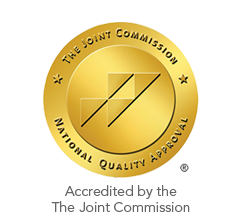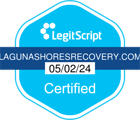Codeine Addiction Treatment in California
According to The National Safety Council, one in every 10 Americans knows someone who has died from opioid use.2 Codeine is one of the opiates that contribute to this drug crisis in America.
Substance use disorder is the leading cause of accidental death in America, and opioids are at the heart of this epidemic. As prescription pain reliever sales are on the rise – they quadrupled between the years of 1999 and 2010 – the misuse of painkillers has led to increases in heroin use. More than 20,101 deaths from overdose are related to prescription opiates. Four out of five people who are new to abusing heroin began their addiction by misusing prescription painkillers.3
What Is Codeine?
The History of Codeine
Forms and Names of Codeine
Some of the prescription drugs include:
- Robitussin A-C
- Tylenol with codeine
Also, known chemically as methylmorphine, it has many “street names” used by those with substance use disorders.
Drugs with codeine ingredients could be called:
- Captain Cody
- Cody
- Little C
- School Boy
Tylenol with codeine is sometimes referred to as:
- T1
- T2
- T3
- T4
- Dors
- Fours
It is frequently mixed with a soft drink, typically Sprite or Mountain Dew, or with alcohol.
These could be known as:
- Purple Drank
- Sizzup
- Texas Tea
- Lean
Myths About Codeine
Why and How Codeine Is Used
When it enters the body, like many opioids, it can cause feelings of euphoria, relaxation, and drowsiness. The reasons for use vary greatly.
Persons with a substance use disorder may no longer need codeine for pain but continue to take it for the associated euphoria or “high.” Continued use of opioids, without the consultation of a doctor, can build up tolerance and dependence on the drug.
Some decide to combine it with alcohol, sometimes called “lean”, for a more intense “high.” This combination is especially dangerous – even deadly – as it can cause difficulty breathing and oxygen deprivation.
Health Risks of Opioid Use Disorder
Some side effects include:
- Sleepiness
- Nausea
- Lowered blood pressure
- Itchiness or rash
- Dry mouth
- Dizziness
- Constipation
- Blurry vision
- Seizures
Some long-term side effects include:
- Major depression
- Acute pancreatitis
- Liver damage
- Financial and legal problems
- Higher sensitivity to pain
- Cold, clammy skin
- Anxiety
- Feeling tired and worn out
- Kidney damage
- Domestic problems
- Incarceration
- Decreased muscle tone
- Death
- Damaged social relationships
- Some memory loss
- Muscle twitches and cramps
- Job loss
- Cardiac issues
- Coma
Treatment
Withdrawal from codeine can be similar to withdrawal symptoms from other opioids.
Some typical withdrawal symptoms include:
- Cravings
- Sweating intensely
- Cold, clamming skin
- Runny nose
- The chills and goosebumps
- Stomach cramps
- Nausea and vomiting
- Muscle spasms
- Irritability
- Anxiety
- Psychosis
- Suicidal or homicidal thoughts
- Hallucinations
Rehab facilities are usually the safest and most helpful option for overcoming serious withdrawal symptoms and maintaining a successful recovery. After overcoming the withdrawal symptoms, maintaining detoxification is the first step in recovering from addiction.
- Drug Overdose Deaths | Drug Overdose | CDC Injury Center. (2019, June 27). Retrieved October 20, 2019
- Prescription Nation 2018: Facing America’s Opioid Epidemic. National Safety Council. 2018.
- Opioid Addiction 2016 Figures & Facts. American Society of Addiction Medicine, 2016.
- Bhandari, M., Bhandari, A., & Bhandari, A. (2011). Recent updates on codeine. Pharmaceutical Methods, 2(1), 3–8. doi:10.4103/2229-4708.81082.
- Ibid.

 Matthew Beck B.A, M.A, LMFT
Matthew Beck B.A, M.A, LMFT 


